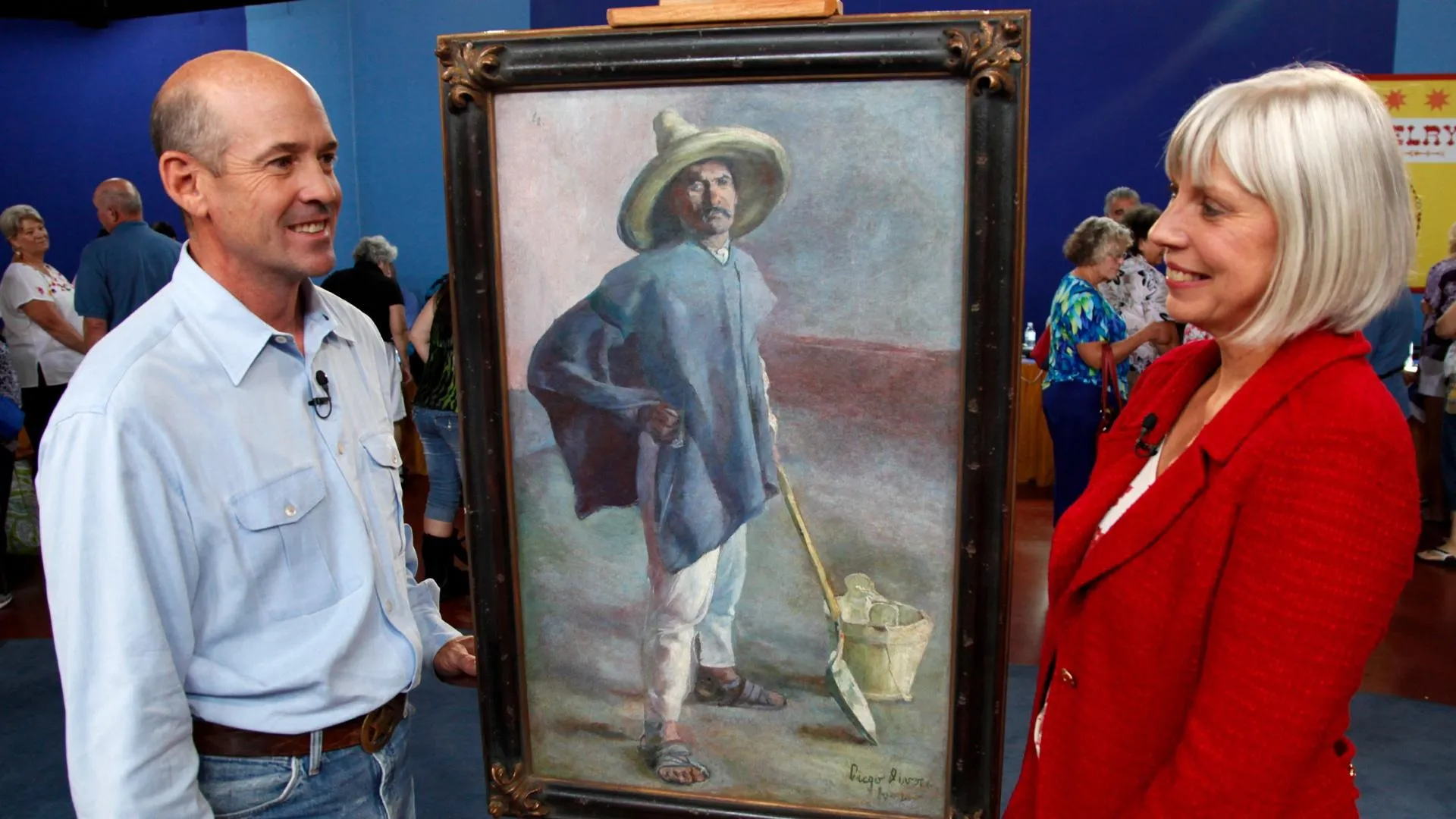GUEST: My wife and I were driving home in San Antonio, Texas. And I saw a military footlocker that I wanted to stop and pick up. We saw the violin sitting in the trash and picked it up.
APPRAISER: You just saw it sitting there and picked it up.
GUEST: Well, we picked it up. My wife has a violin that belonged to her grandfather, and we thought we could use it for parts to repair it. My wife took it into a place in San Antonio. They said it would cost $350 to get it appraised. And she said she didn't know if she wanted to spend that money on it. Didn't know if it was worth it. And so at that point, they made her an offer. And she decided that it might be worth something and brought it back home.
APPRAISER: Right, and what did they offer her?
GUEST: They offered her $1,000 for it.
APPRAISER: Yes. Well, so you know it's worth at least $1,000. Did they tell you anything about the violin?
GUEST: No, they didn't tell us anything about it.
APPRAISER: Well, it's interesting that you pulled this out of the trash. The violin, although it looks terrible, this can all easily be cleaned off. And underneath it, it will look like this. This is the original color of the varnish. The rest of the violin is a beautiful, orange brown color, the same as the top. This is all rosin and dirt. When the violin is played, the rosin from the bow falls down on the instrument. And it just accumulates. And so whoever played this just never cleaned it. On the inside of the instrument, it has the maker's label, which is Giuseppe Pedrazzini. And it says, "1922." He was a very well-known Italian violin maker from what we consider the modern Italian school of violin making. He was born in Cremona, Italy-- or near Cremona-- a small town near Cremona, Italy, which is the most famous town for violin makers. He studied with a Romeo Antoniazzi, who was another very famous Italian violin maker. He later became known as one of the leading makers in what we call the Milan School of violin making. It's just a fine example of his work. He often did this nice carving, deep carving in the scroll. He's just a very fine maker. Do you have any idea about the value of something like this?
GUEST: I have no idea, other than what the appraiser in San Antonio offered.
APPRAISER: Well, I believe an instrument like this-- of course, after it's cleaned up and put into a good condition-- would have a value of around $50,000.
GUEST: $50,000?
APPRAISER: $50,000. A retail value, $50,000.
GUEST: Wow.
APPRAISER: In its current condition, at an auction for retail of musical instruments, would bring around $35,000.
GUEST: Wow. So we should... we should get this violin restored or cleaned up, I guess.
APPRAISER: Yes, and it doesn't need much work. You're very fortunate. I wish I could find things like this in the trash.
GUEST: Holy smokes, $50,000. That was a pretty good day at the... That was a pretty good day.











